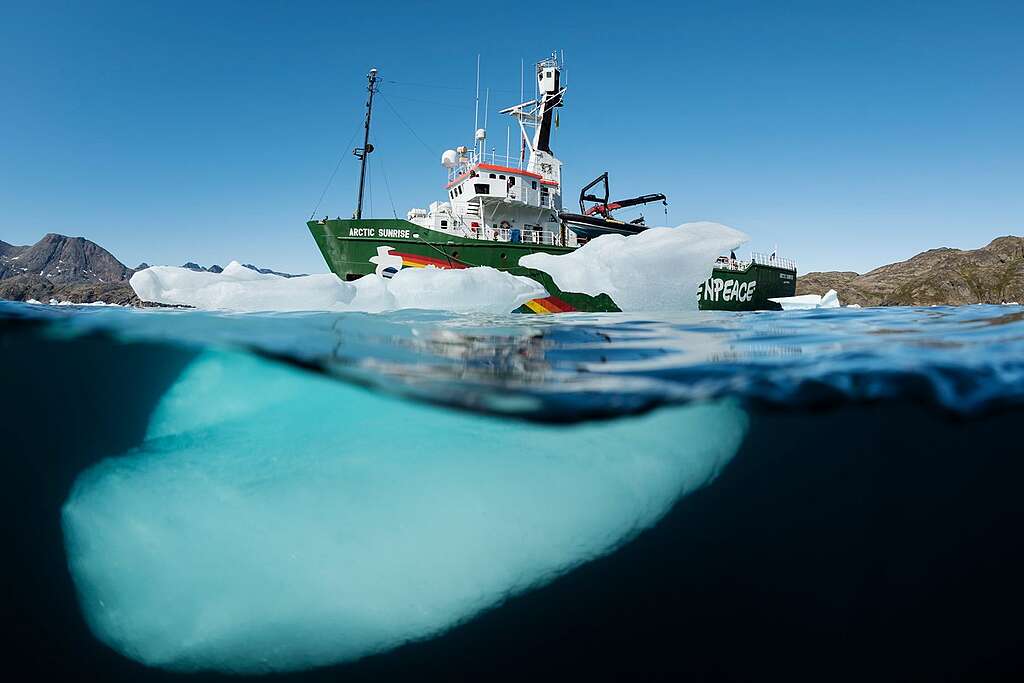For many people the Arctic is seen as one of the last wilderness regions left where there has been limited human impact. However, sampling of marine plastic debris over the past few days shows that the far reaching effects of mankind is clearly present even in the Arctic Ocean.

Original blogpost by Clare Miller
Plastics remains in the ocean for a long time due to the low temperatures and low UV light levels, making it harder to degrade compared to on land. This means it affects everything that depends on the ocean for survival. Wildlife can become entangled or eat the debris mistaking it for food, and birds have been observed using plastic material to build nests. The addition of plastic to beach sediment can alter its temperature, which in turn can affect animals such as turtles which require a specific temperature range for egg development. Alien species can be transported into new areas by attaching themselves to floating debris. Chemical contaminants such as BPA and heavy metals are present in many plastics, leading to biomagnification throughout the food chain. Human activities such as shipping can also be affected by debris becoming entangled in propellers and used medical equipment can pose a health hazard on beaches.
Due to ocean circulation, regions known as Gyres can contain high levels of plastic debris as currents make it hard for trapped debris to leave. One well known example is the North Pacific Trash Vortexlocated in the North Pacific Ocean, which has been the focus of much research. One study showed there to be more plastic fragments than plankton present in the North Pacific Trash Vortex. Modeling has also shown there to be four other areas of collection due to ocean currents throughout the world’s oceans, but these have not been extensively studied.
In the past, Greenpeace has sampled marine plastic debris in the North Atlantic, North Pacific, South Pacific, Red Sea, Mediterranean Sea, South China Sea, Philippine Sea, the Bay of Bengal and the Indian Ocean; many regions where data is limited. In order to expand our knowledge we are now focusing on the Arctic Ocean.
There has been no previous sampling in the Arctic Ocean for marine plastic debris so our work will be be the first of its kind in this region. We have been waiting for calmer water out of the sea ice to sample, so today we could finally deploy the equipment although it did involve a very early morning.
In order to collect some samples, we are towing a plankton net with a flow meter attached alongside the ship. So far, we have found evidence of plastic including some fishing line, polystyrene and film. Most of this is very small (less than 5mm) but we’ve also had some sightings of larger pieces floating by.
It’s important to collect data in order to establish some baseline figures of plastic abundance in the ocean, especially in areas where no data exists. That way, we can tell if the problem is getting worse or if remediation actions are having a positive effect. Plastic cannot be easily removed from the ocean, so the only way to reduce it is to prevent plastic reaching the ocean in the first place
Sampling in the Arctic hasn’t been the most glamorous of work – I’ve been wearing thick down trousers which make walking difficult and several pairs of gloves to stop my hands from freezing whilst bringing the net in and out. All the crew have been great and Popaul helping out on deck in his PJs was a highlight.
But its been good to get the samples and everyone has been surprised by what we’ve caught, even the seabirds took an interest although I think they were hoping we were fishing not finding plastic.
Clare Miller, from the Greenpeace Research Laboratory at the University of Exeter, UK is on the Arctic Sunrise to collect samples of marine debris from the Arctic waters off Svalbard.
Follow us on Twitter and Facebook to get updates on our vital work in the Arctic region.


